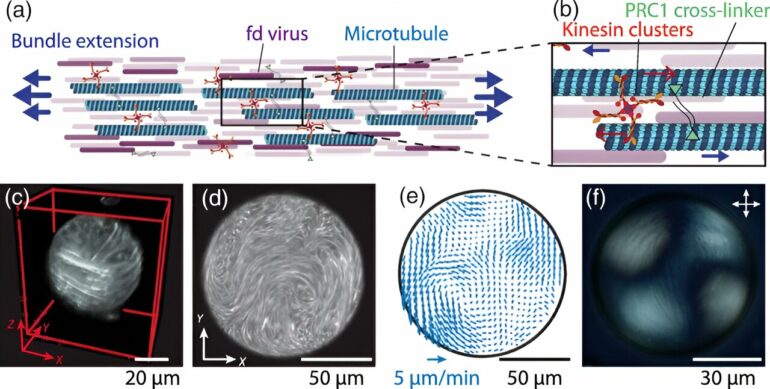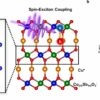An international research team led by Brandeis University has achieved a major breakthrough in the field of active matter physics, as detailed in a study published this week in Physical Review X. This pioneering research offers the first experimental validation of a key theoretical prediction about 3D active nematic liquid crystals by trapping them within cell-sized spherical droplets.
Nematic liquid crystals, made up of elongated molecules aligned in the same direction, have revolutionized modern technology, notably in Liquid Crystal Displays (LCDs) used in smartphones and computer screens. Controlling the orientation of the molecules in these materials enables the vivid displays we rely on daily.
In active nematic liquid crystals, the molecules consume energy to propel themselves. These active materials exhibit dynamic, life-like behaviors, such as spontaneous deformation and flow, without any external forces. Examples of active nematics include bacterial biofilms, cancerous cells, or even grains of rice on a vibrating plate.
Previous experimental studies have shown that 3D active nematics often display chaotic dynamics. However, a seminal active matter theory predicts that these materials should stop moving when energy levels are low or confinement is strong. The new research shows that confining these materials within cell-sized droplets can indeed stop their chaotic self-stirring motion.
“This moment is reminiscent of the early days of LCD technology,” says Dr. Salman Alam, lead author of the study. “We’ve managed to control and stabilize active liquid crystals that convert chemical energy into motion, similar to how our own cells operate. This control over active chaos is crucial for future engineering applications of these materials.”
The team mixes bundles of microtubules—biopolymers crucial for cell division—along with motor proteins and oil to create an emulsion, the active analog of an oil-water mixture found in vinaigrettes.
“Confining these materials in cell-like droplets was a game-changer,” explains Dr. Guillaume Duclos, assistant professor of Physics and corresponding author from Brandeis University. “Our team has been seeking to test this fundamental prediction of active matter theory for years. Aligning theory with experimental results so seamlessly is truly extraordinary.”
The international collaboration proved crucial to the study’s success. Dr. Abhinav Singh, affiliated with Technische Universität Dresden, the Max Planck Institute of Molecular Cell Biology and Genetics, and the Center for Systems Biology Dresden, led the theoretical work and simulations.
“The alignment of our theoretical predictions with experimental results is remarkable,” notes Dr. Singh. “It confirms fundamental behaviors of active matter that could advance our understanding of living systems and open doors to new nanotechnology innovations.”
This research is significant for understanding various biological processes, from cell alignment in tissues to the mitotic spindle organization during cell division.
“Beyond confirming a theory, this research paves the way for advances in materials science and soft robotics,” says Prof. Aparna Baskaran, theoretical physics from Brandeis University, director of the Brandeis Bioinspired Materials Research Science and Engineering Center (MRSEC), and co-author on this study. “We are expanding our understanding of the rules of life and blurring the boundary between matter and life.”
The ability to control active biopolymers could lead to advances in artificial cells, self-healing materials, and biomedical applications. For example, this research could help understand how to prevent the uncontrolled spread of metastatic cancer cells or bacterial biofilms, two well-characterized examples of active nematics.
As the field of active matter physics marks this milestone, researchers are already exploring future applications. “We are on the brink of a new era in materials science at the intersection of biology, physics, and engineering,” concludes Dr. Duclos. “Our work is set to catalyze innovations in active matter research and applications by building materials endowed with life-like properties.”
More information:
Salman Alam et al, Active Fréedericksz Transition in Active Nematic Droplets, Physical Review X (2024). DOI: 10.1103/PhysRevX.14.041002
Provided by
Brandeis University
Citation:
Scientists achieve unprecedented control of active matter (2024, October 4)



